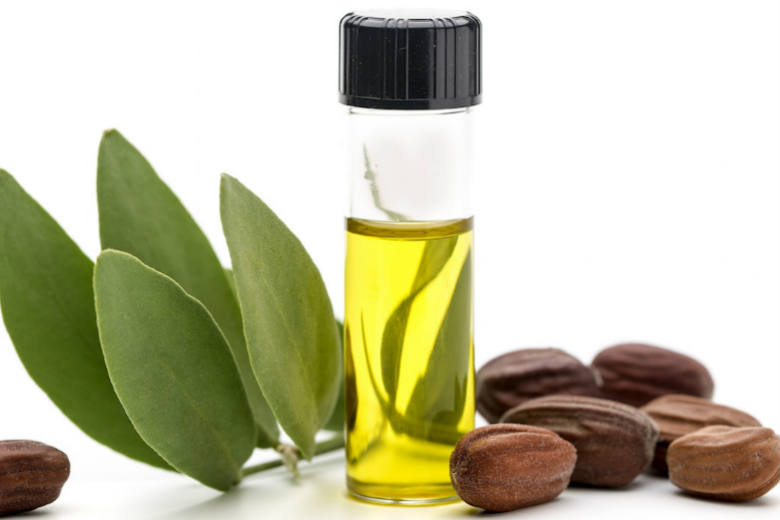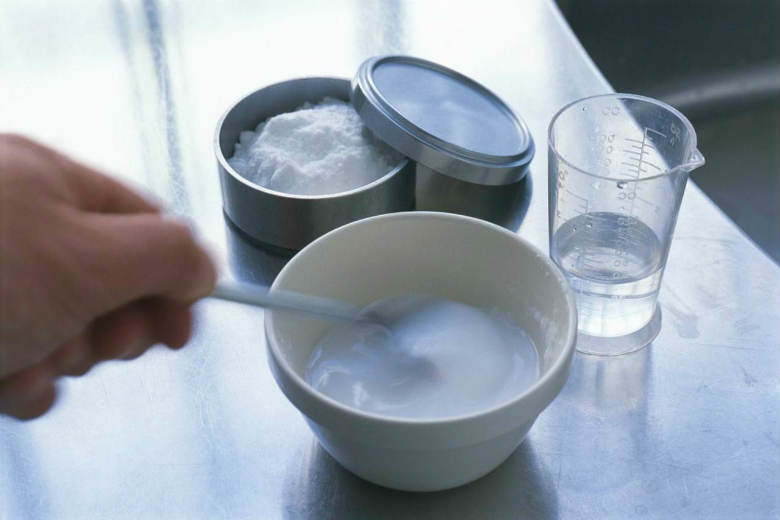Do you have an oily scalp with sticky, lifeless, and limp hair on the crown? Does your hair turn greasy just 2-3 days after shampooing, even though no hair oil is applied? Do you experience pesky scalp pimples, blemishes, or hair loss pretty often? All these can result from the oiliness of the scalp, which is caused by the sebum produced in it. Regular hair washing can help keep the scalp clean and oil-free, but washing the hair too frequently is not recommended as it hampers the scalp’s natural oil balance.
Moreover, it can indirectly ruin your efforts to curb scalp oiliness by forcing the hair follicles to produce even more sebum. Hence, controlling sebum production on the scalp is crucial to remaining grease-free. We bring you the best natural tips and tricks here.
What Is Sebum?
Sebum is an oily, waxy substance produced by the microscopic sebaceous glands under the skin’s surface. According to the Harvard Medical School, it is a complex mixture of fatty acids (57%), wax esters (26%), squalene (12%), and cholesterol (4.5%), along with sweat, dead skin cells, and tiny particles of dust floating around. The term ‘sebum’ is the medical name used for natural skin oils, which coat and moisturize the skin thoroughly. However, if your skin or scalp feels too oily, your glands produce more sebum than it requires (1).
Our scalp and face contain the highest number of sebaceous glands while shins and other smooth surfaces have fewer ones. The face itself contains around 900 glands/sqcm. of skin. The palms of hands and the soles of feet are the only areas with no gland at all.
Why Is Sebum Produced On Scalp?
The production of sebum is a natural and intricate process essential for our body’s well-being. Sebum is crucial in preventing moisture loss from the skin and scalp. Sebaceous glands, commonly found around hair follicles on the scalp and some existing independently, produce sebum. This oily substance lubricates the scalp, creating a protective barrier that moisturizes, shields and waterproofs the hair shafts. Furthermore, sebum plays a vital role in maintaining the scalp’s pH levels, preventing issues like dryness, itchiness, and dandruff while enhancing the vitality and shine of the hair. While sebum is acknowledged for its antioxidant and antimicrobial properties, ongoing scientific research continues to explore these additional functions. (2).
Read Also – Banish Pesky Scalp Pimples With These Super Effective Home Remedies
Why Does The Scalp Overproduce Sebum?
Overproduction of sebum is usually associated with changes in hormonal levels in the body. For example, if you have very active androgens and high progesterone levels, sebum production on your scalp will increase. Another reason could be the excessive dryness of the scalp, which triggers the hair follicles to produce more sebum. Bad hair hygiene and excessive oily food can also cause excess sebum production in your body. Several underlying medical conditions, certain hormonal medications, and other outside factors are also associated with an uptick in sebum production on the scalp.
The condition in which the sebum secretion remains within certain limits is called ‘Physiological Seborrhea’. But when the functionality of sebaceous glands becomes abnormal and the excess secretion of sebum leads to skin problems, the condition is called ‘Pathological Seborrhea’.
Tricks To Control Sebum Production On Scalp
So now that we know the causes, how do we control sebum production on the scalp? These simple natural tips and tricks will help you immensely: (3)
1. Eat Right Food
Eat a well-balanced diet rich in vitamins and proteins to ensure good hair health. Also, ensure you include minerals like zinc and sulfur in your daily meals. They help improve blood circulation throughout the body and the scalp, thereby controlling the overproduction of sebum and reducing oiliness.
2. Massage With Jojoba Oil
An oil massage to cut down excess oil from the scalp? Will it work? Well, only a good oil can help remove the bad oil from the skin of the scalp. Jojoba oil regulates the amount of oil produced in the hair follicles, which aids in reducing scalp oiliness. So take 3-4 teaspoons of jojoba oil and massage your scalp well. You should also work it through the length of your hair and let it soak in the oil for an hour before rinsing with a mild shampoo.
Read Also – Jojoba Oil – What You Need To Know
3. Avoid Sulfate Shampoos
Sulfates are industrial detergents used to remove all sorts of oil and grime. You can imagine how harsh they can be on your tender hair follicles. Sulfates in commercial shampoos dry up the hair follicles and cause them to overproduce sebum. So, avoid using shampoos containing various compounds of sulfates and go in for a mild and natural shampoo instead.
Read Also – Why Use A Paraben And Sulfate-Free Shampoo?
4. Rinse them Out Well
Your shampoo and conditioner can also give you an oily scalp by getting trapped in the hair follicles. Ensure you rinse your hair well after shampooing and conditioning until the water is spotless. Also, seal the hair cuticles using cold water for the final rinse. If you use hot water instead, the follicles will open again, and the sebum will ooze out.
5. Wash With Lemon Juice
Lemon juice is extremely helpful in maintaining the pH balance of the scalp, which further helps control the overproduction of sebum on the scalp. For this, you need to add the juice of half a lemon to 3 cups of water. Once you finish your hair wash (shampooing, conditioning, and rinsing), rinse with this lemon-water mixture to constrict the hair follicles and reduce oiliness.
6. Get Rid Of Buildups
Using too many hair styling products can cause buildup at the hair follicles on your scalp. This increases the production of sebum to push them out. Hence, it is essential to remove product buildup to eliminate the oiliness of the scalp. Mix baking soda with water and gently rub a paste on the scalp to remove buildup. Then, wash it off with lukewarm water.
Also Read – 5 Surprising Beauty Uses of Eggshells You Must Try for Radiant Looks
7. Have More Vitamin B
Include B vitamins in your diet as much as possible. This is amazingly helpful in naturally controlling excess oil secretion from the scalp and skin. Eat fresh fruits, meat, eggs, fish, and leafy vegetables to get your required daily dose of vitamin B and keep oiliness at bay.
8. Use A Dry Shampoo
Use a high-quality dry shampoo if you want an instant fix for your oily scalp. It absorbs the excess sebum secreted by the hair follicles on the scalp, making the hair look fresh and healthy. This way, dry shampoo will also help you avoid excessive washing of your locks with harsh shampoos. As a result, the natural oil balance of your scalp will not be affected.
Frequently Asked Questions (FAQs)
How To Remove Sebum Plugs From Scalp?
Massage your scalp gently with the pads of your fingers under running warm water. Next, clean it with a mild clarifying shampoo to eliminate sebum plugs and properly purify the scalp. Finally, rinse your hair thoroughly and condition it.
How To Unclog Hair Follicles Naturally?
Use a mixture of ginger paste and lemon juice to cleanse your scalp. Massage the mixture gently while moving your fingertips in a small circular motion. Let it sit for 5-10 minutes so the hair follicles become unclogged. Then, wash off with lukewarm water.
How To Rejuvenate Hair Follicles Naturally?
If your hair follicles need to be rejuvenated to eliminate the effects of overactive sebaceous glands, use almond oil, rosemary essential oil, and peppermint essential oil. Massage it into your scalp gently and wait for half an hour before rinsing.
Also Read – How To Exfoliate Your Scalp – 11 Homemade Brown Sugar Scrub Recipes
References:
- “Sebum Buildup: 3 Causes And 2 Steps to Get rid of It“, HairGuard.com
- “What Is Sebum and Why Does It Build Up on Skin and Hair?“, HealthLine.com
- “Sebum Buildup on the Scalp: Causes and Treatment“, verywellhealth.com



